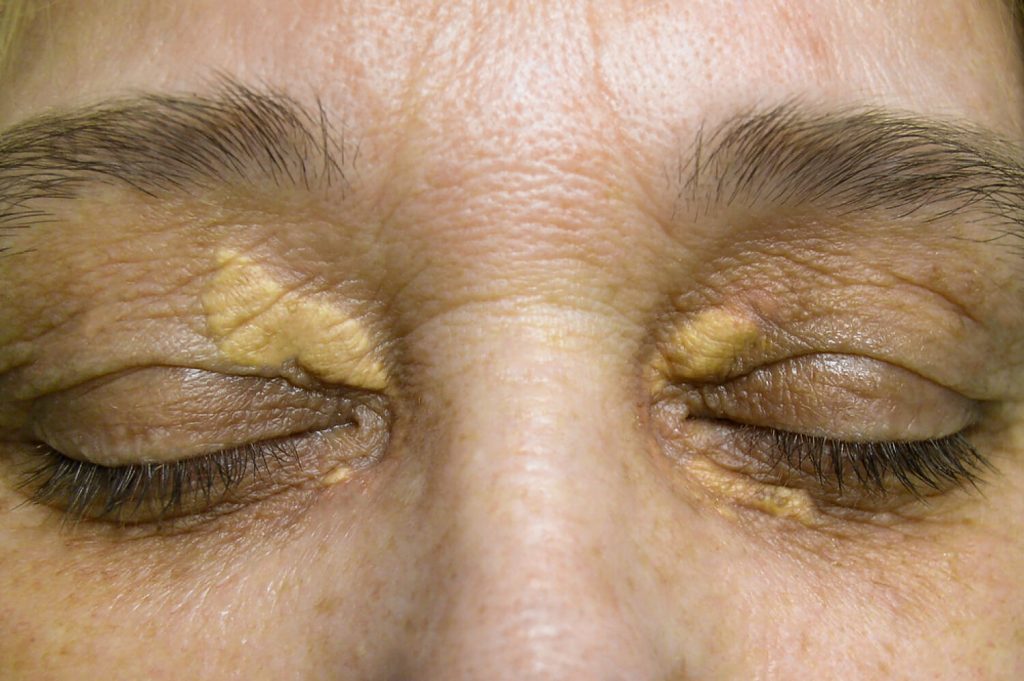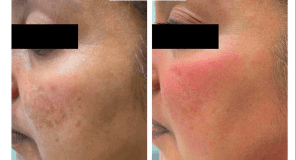What are xanthelasma and xanthelasma treatments?
A xanthelasma is a harmless yellow bump that’s normally located on or near the skin of the eyelid. It’s a type of xanthoma or cholesterol deposit which can be soft, semi-solid or chalky. There are numerous options available when it comes to xanthelasma treatments. Another name for a xanthelasma is xanthelasma palpebrarum (XP). These are caused when cholesterol deposits build under your skin.
At Shumaila’s, we can come to your assistance if you do need to have a xanthelasma removed. Read on to find out more about how common xanthelasmas are, what causes them, whether they are likely to go away without treatment and what you can do to have them removed. We have a great deal of experience in xanthelasma removal and have helped a wide range of patients to get the results that they were looking for.
How common are xanthelasmas?
Xanthelasmas are the most common types of xanthoma that affect the skin. However, only around 1% of the population has them.
Xanthelasmas can be flat or bumpy, soft or firm or uncomfortable.
What are the causes of xanthelasmas?
Someone may be likely to develop xanthelasmas if they have high cholesterol which could have been inherited from their parents, or due to their diet. You may also develop them if you have recently gained a substantial amount of weight, have a thyroid issue like hypothyroidism, have been drinking a considerable amount of alcohol or are suffering from inflammation.
How can I find out if I have high cholesterol?
If you have xanthelasmas, there is a big chance that you may have high cholesterol. You can take a blood test to find out if you do have high cholesterol.
How can I bring cholesterol down to a normal level?
There are many steps you take to attempt to lower your cholesterol. These include exercising more, taking medication to lower it and eating more fruit and vegetables. Reducing your intake of fatty foods may also be helpful.
How can I get a diagnosis of xanthelasma?
A healthcare provider can examine the skin around your eyelids to verify whether you have xanthelasma or xanthelasmas. If you have more than one xanthelasma, they could look identical on each eyelid.
What tests can be carried out to diagnose xanthelasmas?
Xanthelasma diagnoses don’t need tests. However, there are some things which your healthcare provider may decide to carry out to find out more about your condition. These can include checking your cholesterol levels, looking at your blood sugar to find out whether you have diabetes, examining your liver function and looking at your thyroid to see if there’s a problem with it.
Can a xanthelasma go away without treatment?
Unfortunately, a xanthelasma won’t go away on its own. It will either remain the same size or become bigger. You won’t be able to pop or squeeze it to get rid of it. You also risk burning your skin if you use a product that hasn’t been specifically prescribed for it. This is why it’s always best to seek out professional medical treatment if you do want to remove a xanthelasma.
How can I have a xanthelasma removed?
You will need medical assistance if you want to get rid of a xanthelasma. At Shumaila’s we can help if you require a xanthelasma treatment. We can use advanced techniques to safely and effectively remove a xanthelasma. At Shumaila’s, we use electrodessication (microcautery) to treat xanthelasma. This kind of treatment will cause less scarring than other options and isn’t as dangerous as chemical treatments. You can expect to see an improvement of around 80-90% in terms of the appearance of your xanthelasma or xanthelasmas. No surgical removal is required, and the treatment is quicker than many other options. Most of our patients require two treatments, with only a small number needing a further one.
Can a xanthelasma return once it is removed?
Sadly, it is possible for a xanthelasma to come back once it has been removed. However, you could take steps to lower your cholesterol to reduce the chances of a xanthelasma returning.
How long does it take to recover from a xanthelasma treatment?
It can take around two weeks to recover from a xanthelasma treatment. Some side effects will disappear within a matter of days, whilst you may need to wait a month or two for others to go away, such as skin discolouration.
Why do so many people want to remove xanthelasmas?
A xanthelasma isn’t normally harmful. Most people decide to seek out treatment because they are not happy with the way xanthelasmas look.
What should I do once a xanthelasma has been removed?
As xanthelasma is often a symptom of high cholesterol or heart disease, you may need to check in with your GP regularly for advice on keeping yourself healthy.
About Shumaila’s
At Shumaila’s we are waiting to hear from you if you require xanthelasma removal in London. We are market leaders when it comes to xanthelasma treatment and we have been established since way back in 2005. Our treatments are carried out in a safe, hygienic environment and we consistently utilise the latest technology and training. Find out more about our xanthelasma treatment services today. We are ready to hear from you right now if you’re ready to find out more about our xanthelasma treatments or wish to book a consultation. You can reach us by filling in the form on our website or by sending an email to contact@shumailas.com. You can also find us on various social media platforms including Facebook and Instagram.
Shumaila’s aesthetic and laser clinics in London and Essex provide the most advanced laser hair removal, suitable for almost all skin types. Book your FREE consultation today to find out if you are suitable for permanent laser hair removal.



